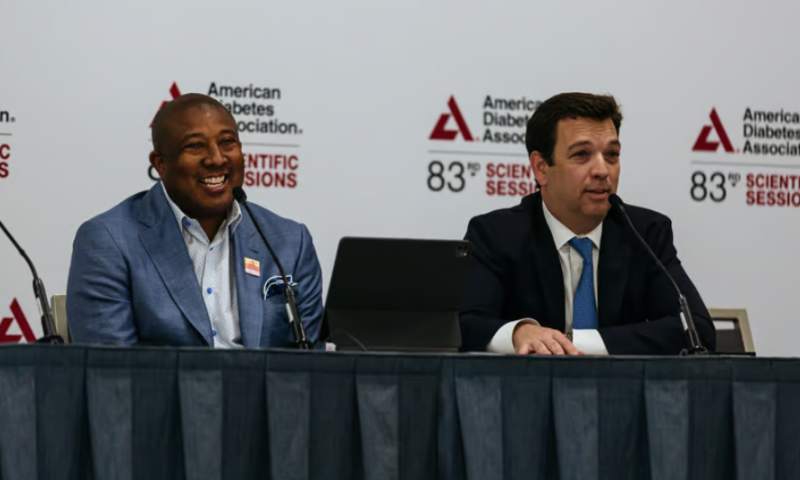Though continuous glucose monitors have long been more widely used among people with Type 1 diabetes, new research has increasingly shown that the Type 2 population can majorly benefit from CGM use, too—so much so that earlier this year, the Centers for Medicare & Medicaid Services in the U.S. expanded CGM coverage to include more Type 2 users.
Doubling down on its own push to bring its CGM technology to more people with Type 2 diabetes is Abbott, which unveiled a new partnership with the American Diabetes Association (ADA) and kicked off its previously announced WeightWatchers collaboration during the ADA’s annual scientific sessions in San Diego on Saturday.
The WeightWatchers team-up allows people who have been prescribed one of Abbott’s FreeStyle Libre 14-Day or FreeStyle Libre 2 sensors and who are using the WeightWatchers diabetes-tailored program to see their CGM data directly in the WeightWatchers app.
“That’s a tremendous convenience feature for people with Type 2 diabetes who are using WeightWatchers,” Marc Taub, Ph.D., divisional vice president of technical operations for Abbott’s diabetes business, said in an interview with Fierce Medtech on Saturday, calling the collaboration a “natural pairing.”
“We know that maintenance of a healthy weight or achieving a healthy weight is incredibly important for the management of Type 2 diabetes, and WeightWatchers is such a respected, most-prescribed name in weight management, and they have a diabetes-tailored program that helps people make healthy food choices with the goals of weight loss and lowering your HbA1c,” he explained. “By having the FreeStyle Libre data within the app, they’re going to be able to see very clearly how their food choices affect their glucose and how being able to keep their glucose more in target ranges is going to improve their diabetes.”
The partnership with the ADA, meanwhile, will see Abbott provide $2.65 million in grant funding over the next three years to help the association dig into the concept of using CGM systems for “personalized, therapeutic nutrition,” according to Saturday’s announcement—including, specifically, by launching two pilot programs directed at using CGM data to help people with Type 2 diabetes adjust and manage their dietary habits, regardless of whether they’re on insulin therapy.
Overall, the push to get its FreeStyle Libre technology into the hands of more Type 2 users comes as “the evidence shows that people with Type 2 diabetes see improved outcomes when you use continuous glucose monitoring,” Taub said.
Both devicemakers like Abbott and large government and other payer bodies are taking that evidence to heart, he noted, pointing to recently expanded reimbursement for Abbott’s CGMs not only in the U.S. but also in France and Japan.
Separately from the Type 2 CGM push, Taub also offered an update on the dual glucose ketone sensor that’s currently under development at Abbott and that the company first announced at last year’s ADA conference. The sensor will be aimed at catching rising ketone levels as early as possible to help avoid cases of diabetic ketoacidosis.
“We continue to see green lights through R&D—we’re having great success in the development of that program,” Taub said. “And really, the level of interest in this technology is unlike anything I’ve seen.”
In fact, he said, the project has had “maybe, in my career, the most overwhelming support of anything I’ve worked on.” Physicians and researchers are “clamoring” to be part of the early studies of the device, according to Taub, based on a belief that it could potentially “revolutionize the care for Type 1 diabetes—again.”
“There’s so much that we stand to learn about ketones because there hasn’t been a continuous sensor for them before, so there’s really very little we know about the evolution of ketones and how they rise in people with diabetes, for example,” he continued. “Physicians we speak to are really interested in how it can give their patients and themselves peace of mind.”

